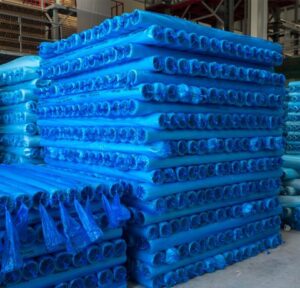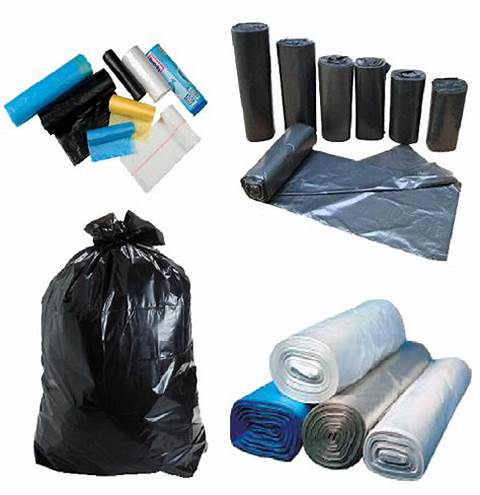Introduction
Let’s be honest — garbage bags aren’t exactly a hot topic in everyday conversations. Yet, they are something every household, office, restaurant, hospital, and public place uses every single day. Despite their silent presence, garbage bags play a crucial role in hygiene, sanitation, and environmental management.
From keeping our surroundings clean to safely disposing of hazardous waste, these everyday items make our lives more organized and sanitary. But how many of us actually take the time to choose the right garbage bags? Or understand their types, uses, and environmental impact?
In this guide, we’ll dive deep into everything you should know about garbage bags — how they’re made, the different types available, their importance in waste management, common misconceptions, and frequently asked questions.

What Are Garbage Bags?
Garbage bags, also known as trash bags or bin liners, are flexible containers made of plastic (or sometimes biodegradable material) that hold and transport waste. Their main purpose is to keep garbage contained, prevent spills, and make waste disposal more hygienic.
They come in various sizes, thicknesses, colors, and materials — each designed for specific waste types and usage environments. Whether you’re tossing out kitchen scraps or handling medical waste, there’s a right type of garbage bag for the job.
Why Garbage Bags Are More Important Than You Think
Most people toss their trash and forget about it. But the quality and type of garbage bags used directly affect:
-
Health and hygiene: Preventing leaks and containing odors.
-
Waste segregation: Using color-coded bags makes sorting recyclable and non-recyclable waste easier.
-
Environmental impact: Eco-friendly options reduce plastic pollution.
-
Workplace efficiency: In commercial setups, durable garbage bags save time and prevent mess.
When chosen wisely, garbage bags can reduce the chance of contamination, pest infestation, and unnecessary environmental damage.
Types of Garbage Bags and Their Uses
Understanding which type of garbage bags to use can make waste disposal more efficient and safe.
1. Black Garbage Bags
Most commonly used for general waste. These are opaque and hide unpleasant visuals. Ideal for kitchen, household, and office trash.
2. Green Garbage Bags
Often used for garden waste or compostable organic matter. Can be used in places practicing basic waste segregation.
3. Blue Garbage Bags
Usually indicate recyclable waste like paper, plastics, and glass. Helps in ensuring recyclables are not mixed with regular trash.
4. Red Garbage Bags
Typically used in biomedical or hazardous environments. Found in hospitals or clinics to dispose of contaminated materials.
5. Yellow Garbage Bags
Often seen in labs or places dealing with chemical waste. Designed for infectious or pharmaceutical disposal.
6. Biodegradable Garbage Bags
Made from cornstarch or other plant-based materials. An eco-friendly option to reduce reliance on traditional plastics.
How to Choose the Right Garbage Bags
Choosing the wrong garbage bags can lead to rips, spills, and even health risks. Here’s what you should consider:
-
Size: Pick a size that fits your bin snugly. Oversized bags waste material; undersized bags cause overflow.
-
Thickness (Microns): Thicker bags handle heavier loads. A 50-micron bag is perfect for heavy kitchen or commercial waste.
-
Material: LDPE (Low-Density Polyethylene) is flexible; HDPE (High-Density Polyethylene) is stronger but less stretchy.
-
Color Code: Use color-coded garbage bags to help segregate waste effectively.
-
Closure Type: Drawstring, flap tie, or simple open tops—choose based on ease of use.
The Role of Garbage Bags in Environmental Sustainability
As the world deals with growing landfills and plastic pollution, the role of eco-conscious garbage bags becomes critical.
Key Contributions:
-
Supports recycling: Properly segregated waste leads to more effective recycling.
-
Reduces contamination: Separating wet and dry waste avoids cross-contamination.
-
Biodegradable options: Reduce plastic buildup in the environment.
-
Encourages cleaner public spaces: Promotes responsible waste disposal in public areas.
By simply choosing better garbage bags, we contribute to a cleaner, greener planet.
Common Misconceptions (Myths vs. Facts)
There’s a lot of misinformation floating around about garbage bags. Let’s bust some of the biggest myths:
Myth 1: All plastic garbage bags are harmful to the environment
Fact: Not all plastics are created equal. Some garbage bags are made from recycled materials or are biodegradable.
Myth 2: One bag fits all needs
Fact: Different waste types need different garbage bags. Using the wrong one can cause leaks or exposure to harmful substances.
Myth 3: Colored garbage bags are just for aesthetics
Fact: Colors serve a real purpose — they help segregate different kinds of waste for safe disposal.
Myth 4: Biodegradable bags are weak
Fact: Many biodegradable garbage bags today are designed to be strong and durable enough for daily use.
Myth 5: Garbage bags don’t make a difference
Fact: The right garbage bags prevent disease spread, reduce littering, and even support better waste recycling processes.
Frequently Asked Questions (FAQs)
Q1. Are garbage bags recyclable?
Yes, some types of plastic garbage bags can be recycled if they’re clean and not contaminated. Check local recycling rules.
Q2. What’s the difference between biodegradable and compostable bags?
Biodegradable bags break down over time, but compostable bags decompose into non-toxic elements faster and can go into compost piles.
Q3. How often should I change my garbage bag?
In households, daily is ideal, especially for organic waste. Offices can go longer depending on waste type.
Q4. Are there any health risks with low-quality garbage bags?
Yes. Poor-quality garbage bags may tear, leak, or release toxins. It’s better to invest in quality to avoid health issues.
Q5. Can I use the same garbage bag for wet and dry waste?
It’s not recommended. Use different garbage bags for dry and wet waste to avoid contamination and leaks.
Q6. What are microns in garbage bags?
Micron refers to the thickness of the plastic. The higher the micron, the stronger the bag.
Simple Tips to Use Garbage Bags More Efficiently
Here are a few ways to make the most of your garbage bags:
-
Don’t overfill them; stick to 70–80% capacity.
-
Always tie them tightly before disposal.
-
Use separate bags for recyclables, organic, and non-recyclable waste.
-
Store bags in a clean, dry area to maintain durability.
-
Choose eco-friendly options whenever possible.
The Global Push for Better Waste Solutions
Governments and environmental organizations are constantly promoting sustainable waste practices. One small but impactful change individuals and businesses can make is the selection of smarter, eco-conscious garbage bags.
As cities adopt stricter waste management laws, using color-coded or biodegradable garbage bags may soon become mandatory in many regions.
In Commercial Spaces: Why Businesses Must Prioritize Garbage Bags
Offices, hospitals, restaurants, and shopping malls generate enormous waste daily. Using proper garbage bags:
-
Maintains a clean, professional environment.
-
Ensures compliance with sanitation standards.
-
Helps avoid pest infestations or unpleasant odors.
-
Makes waste handling and disposal efficient for janitorial staff.
Businesses must treat garbage bags as essential inventory, not just afterthoughts.
In Residential Use: Smart Habits at Home
At home, garbage bags help families maintain a cleaner and safer space. By keeping kitchen waste, bathroom trash, and recyclables organized, you reduce health risks and improve hygiene.
Teach children the habit of using the right garbage bags and segregating waste early on — it’s a lesson in both cleanliness and sustainability.

Conclusion
Often overlooked, garbage bags are the unsung heroes of our daily lives. From maintaining cleanliness to supporting effective waste management, their importance goes far beyond holding trash.
By understanding different types of garbage bags, using them wisely, and choosing environmentally responsible options, we can take a big step toward cleaner homes, cleaner cities, and a healthier planet.
So next time you reach for a trash bag, remember — you’re not just throwing something away. You’re making a choice that affects the environment, your health, and the world around you.
How to Register a Company in India: A Complete Guide for Startups and Foreign Businesses



